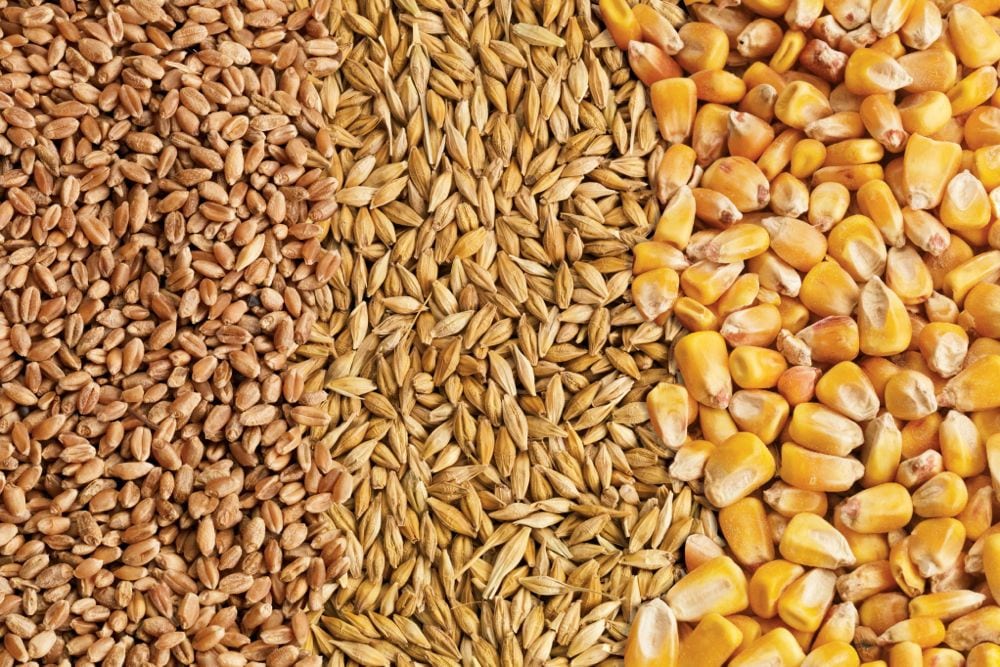“There’s no cure for high prices like high prices.”
That’s a frequent observation provided by Cal Whewell, a risk management consultant with FC Stone in Perrysburg, Ohio, and he made it several times during a recent presentation to the Grain Farmers of Ontario. Whewell was one of the keynote speakers here during the organization’s recent annual meeting, the March Classic.
In addition to suggesting that the days of U.S. domination in the corn market are being challenged, he also notes changes to the global soybean and wheat sectors affecting the U.S. position in those commodities.
Read Also

Feed Grains Weekly: Good export demand pushing up domestic prices
Prices for feed barley and wheat have been trending higher lately, said analyst Jerry Klassen of Resilient Capital in Winnipeg.
On the soybean side, shifting production levels and export demands are stressing what was once U.S. domination in the market. In 1992-93, the U.S. held 51 per cent of world production in soybeans; today, it’s 30 per cent. Brazil and Argentina have led the charge to replace the U.S. as the world’s leader and on its own, Brazil is now growing more soybeans than the U.S.
Infrastructure and logistics, however, are holding them back. They may be able to sell their soybeans for a dollar per bushel less than the Chicago price — but it’s no bargain if a buyer has to wait 50 to 60 days.
For the short-term domestic picture, the key issue is the carryout from last year. At 125 million bushels, conditions are already pretty tight. But even with an increased acreage for soybeans expected for this year, there is the belief that the U.S. may have to ration supply by cancelling export contracts.
“For instance, is China going to cancel its contracts (with the U.S.)?” Whewell poses. “If they’re convinced they can get what they want and when they need it, yes. China has 61 per cent of world exports in soybeans, and as soon as they know they can get it from South America, they’ll cancel it from the U.S.”
China, he continues, is showing tremendous growth, and is importing almost all of its needs, from a soybean — and corn — perspective.
In February 2012, Whewell said China would import corn only to the point where its own production approaches that of other corn-producing countries.
For now, the country needs to import corn to meet its increasingly industrialized livestock feed demands, but within the next five to 10 years, more advanced hybrids will be introduced and mechanized harvesting will replace the hand-harvesting done now. Those two factors will push yields above 100 bushels per acre — they’re now in the 70s — shifting China’s reliance on corn imports.
On the wheat side, Whewell talks of a more stable market situation. Currently, China is the world leader in wheat production, with 18 per cent. But the 27 countries of the E.U. combine to produce 20 per cent of the world’s wheat.
No one country dominates wheat consumption because it’s such a well-dispersed crop; it’s grown around the world and harvested 11 months of the year. Argentina’s also entered the wheat market with an estimated four million tonnes in production. Measured against the former Soviet Union’s drop of 37 million tonnes and Australia’s loss of eight million tonnes, it’s a different global wheat market.
The U.S. wheat carryout from last year was 716 million bushels, and although that’s not as “scary” as the soybean carryout, there is concern that the most of the hard red winter wheat seeded last fall in the U.S. went into the ground under some of the worst ratings in history — although rain has been falling of late in that region.
In fact, it’s worth mentioning that corn and soybeans are projected to see increases in acres planted (wheat’s are down buy by only 40,000 acres); Whewell states that up to 10 million acres will come out of Conservation Reserve Programs (CRP).
Yet those states that are seeing the highest shifts are those affected most by the drought — including North Dakota (leading the way with 600,000 acres), Montana, Minnesota, Missouri, Kansas, South Dakota, Iowa, Colorado, Nebraska and Texas. Those states, unlike many in the Midwest, are still suffering from short- and long-term drought.
— Ralph Pearce is a field editor for Country Guide at St. Marys, Ont.
Related story:
New dynamic forming in global corn production, March 25, 2013














